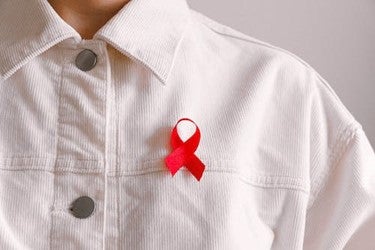Effective strategies for managing obesity and HIV

The HIV/AIDS pandemic has had a devasting grip on the globe over the past 41 years, with the African continent experiencing the brunt of the deadly virus and the sub-Saharan region containing the highest rates of HIV in the world.11In addition to this, obesity has become a health crisis in many parts of the world as it leads to the development of non-communicable diseases such as diabetes and cardiovascular disease. These two public health pandemics will create the perfect storm not, only for people living with HIV but for countries and economies alike. Healthcare professionals are now faced with finding ways to manage these complexities amongst already overburdened health care systems.
Antiretroviral treatment (ART) aims to decrease the risk of patients contracting opportunistic diseases and prevent reinfection in people living with HIV. In the late 1990s, a more aggressive form of HIV treatment called Highly Active Antiretroviral Therapy (HAART) was formulated. This course of medication involves the combination of more drugs than previous regimes and has been more effective in prolonging the lives of HIV patients.¹ Despite HAART showing significant improvement in boosting the immunity of people living with HIV, it has been linked to obesity in people living with HIV.
The impact of HAART on patients’ nutritional status
There is seemingly a direct relationship between HAART treatment and obesity. Theories have been put forward and studies conducted to try and explain this occurrence. However, - as the causes of obesity are multifactorial, HIV and its treatment options exacerbate the level of complexity. A study conducted by de Araújo Mariz et al12 found that people living with HIV who were on HAART treatment, became insulin-resistant and this has been postulated as one of the reasons for the obesity seen in these people living with HIV. Furthermore, metabolic changes have been noted in people living with HIV. Peltenburg et.al, found that the virus itself causes metabolic changes that impact weight control. and treatment does not reverse the effect.13 Generally, obesity is attributed to lifestyle, diet and noted changes in insulin resistance and metabolic function. A study conducted in India found that 67% of the study participants became obese when they were on HAART treatment for five years or longer.³ This study also found that the frequent use of oil to cook food and repeated recycling of oil to prepare and reheat foods contributed to an increase in the consumption of trans fatty acids.
Ways to improve the nutritional status of patients with obesity caused by HAART
It has been suggested by Bailin et al, that behavioural interventions are one of the best ways to curb obesity in HIV patients on HAART.5 These interventions involve calorie restrictions and an incorporation of exercise.⁵ While these recommendations are well suited for people living in first world countries, the same cannot be applied for those in third world countries where food insecurity is an ongoing problem.
With this considered, a study conducted in Kwa-Zulu Natal by Oketch et al., indicated that the provision of nutrition care and support has been helpful in improving the nutritional status of HIV patients. Although nutrition care plans have been found to be successful, consideration for the low dietary diversity, and household food insecurity must be accounted for when advising patients.⁶ Another aspect to be considered is the cultural differences pertaining to beliefs around body types and wealth. In some African contexts, “fat” and “obesity” are associated with wealth and health.⁸
Bearing in mind the cultural and socio-economic differences that are apparent in ESAR, the following recommendations can be made:
People living with HIV should eat three meals a day at a specific time to establish a routine. The establishment of a routine will help curb the consumption of convenience foods and eradicate bad eating habits.9
Along with mealtime planning, they should be given adequate guidance about how to consume certain foods to try and curb obesity. The study conducted on the effectiveness of nutrition care and support in KwaZulu-Natal illustrates the necessity for guided eating plans for people living with HIV experiencing weight-related challenges to treatment.⁶
- Proteins
A study conducted by Weigle et al., showed that an increase in dietary protein from 15% to 30% of energy and a reduction in fat from 35% to 20%, and a constant carbohydrate intake, produces a sustained decrease in calorie intake and results in significant weight loss.10 Within the context of economic constraints, legumes as well as other plant-based proteins are viable replacements for meat as a source of proteins.7
- Fats
Given that oil is frequently used to prepare food³, patients should be advised about the excessive use of cooking oil as well as recycling of cooking oil. Alternative cooking methods should be recommended.
- Carbohydrates
Carbohydrates are vital to produce glucose. However, portion control should be applied especially in countries where staples such as pap are consumed in extremely large portions.
The food-based dietary guidelines apply to people living with HIV and are suitable for the whole family:
- Enjoy a variety of foods.
- Be active!
- Make starchy foods part of most meals.
- Eat plenty of vegetables and fruit every day.
- Eat dry beans, split peas, lentils and soya regularly.
- Have milk, maas or yoghurt every day.
- Fish, chicken, lean meat, or eggs can be eaten daily.
- Drink lots of clean, safe water.
- Use fats sparingly. Choose vegetable oils, rather than hard fats.
- Use sugar and foods and drinks high in sugar sparingly.
Conclusion
HAART has played a vital role in helping to reduce the mortality rate linked to HIV. It is, however, associated with obesity in people living with HIV. Interventions for curbing obesity associated with HIV treatment involve practical applications by healthcare professionals through the provision of nutrition advice and care.
References:
- Risk Factors of Cardiovascular Diseases in HIV/AIDS Patients on HAART
Dickson Shey et al. National Library of Medicine. Published October 15, 2015. https://www.ncbi.nlm.nih.gov/pmc/articles/PMC4645867. - The Nutritional Status of Adult Antiretroviral Therapy Recipients with a Recent HIV Diagnosis; A Cross-Sectional Study in Primary Health Facilities in Gauteng, South Africa. Khabo Mahlangu, Perpetua Modjadji, Sphiwe Madiba. Healthcare. 2020 https://www.mdpi.com/2227-9032/8/3/290/htm
- https://ipc2021.popconf.org/uploads/210358
- HIV-associated Lipodystrophy Nilmarie Guzman; Vini Vijayan. National Library of Medicine. Updated September 2022. https://pubmed.ncbi.nlm.nih.gov/23545227/
- OBESITY AND WEIGHT GAIN IN PERSONS WITH HIV.
Samuel S. Bailin, MD, Curtis L. Gabriel, MD, PhD,Celestine N. Wanjalla, MD, PhD, and John R. Koethe, MD. 2021 https://www.ncbi.nlm.nih.gov/pmc/articles/PMC7719267/ - Too little, too late: Comparison of nutritional status and quality of life of nutrition care and support recipient and non-recipients among HIV-positive adults in KwaZulu-Natal, South Africa. Jecinter Akinyi Oketcha, Marie Patersona Eleni, Winfred Maunder Nigel Campbell Rollinsc. 3 March 2011
https://www.sciencedirect.com/science/article/abs/pii/S0168851010002526 - What should I eat? DIABETES and NUTRITION https://www.diabetessa.org.za/what-i-should-eat/
- Increasing obesity in treated female HIV patients from Sub-Saharan Africa: potential causes and targets for intervention.
Claire L. McCormick et al. Frontiers. 13 November 2014. https://www.frontiersin.org/articles/10.3389/fimmu.2014.00507/full - Meal timing and obesity; interactions with macronutrient intake and chronotype
Qian Xiao, Marta Garaulet, and Frank A.J.L. Scheer January 31, 2019
https://www.ncbi.nlm.nih.gov/pmc/articles/PMC6669101/#:~:text=Our%20study%20suggests%20that%20higher,and%20protein%20intake%20and%20obesity. - The satiating power of protein—a key to obesity prevention?
Arne Astrup, The American Journal of Clinical Nutrition, Volume 82, Issue 1, July 2005, Pages 1–2. 01 July 2005 - Global HIV & AIDS statistics — Fact sheet
https://www.unaids.org/en/resources/fact-sheet - Body mass index in individuals with HIV infection and factors associated with thinness and overweight/obesity
Carolline de Araújo Mariz et al https://www.scielosp.org/article/ssm/content/raw/?resource_ssm_path=/media/assets/csp/v27n10/13.pdf - Persistent metabolic changes in HIV-infected patients during the first year of combination antiretroviral therapy
N. Chantal Peltenburg et al https://www.nature.com/articles/s41598-018-35271-0
If you liked this post you may also like




